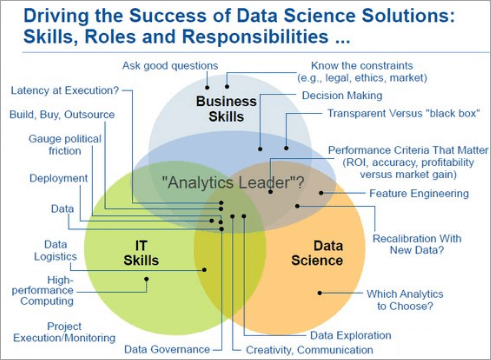The data generated by companies, businesses and organizations is growing day in and day out. The type and form of this data is really vast and the channels from which it is generated are also diverse. This not only adds to the complexity of data but also poses severe challenges in its processing. One of the unique ways to direct this data in the right direction is to make use of Data Analytics processes. In simple terms, Data Analytics helps in finding unique patterns and correlations in large data sets that are difficult to process manually. This not only drives the efficiency of business processes but also helps in orienting the growth strategies of a business in the right direction.
Data Analytics courses
In order to get acquainted with the knowledge of Data Analytics, it is important to understand this discipline in much more detail. One of the best ways to achieve this objective is to understand the role of online data analytics courses that provide deep knowledge of the subject in addition to the skills necessary for executing practical projects. Data Analytics courses give an overview of the subject while simultaneously making the learners aware of the tools, techniques, and methodologies of the subject.
Different types of Data Analytics processes that are learned during the course include descriptive analytics, diagnostic analytics, prescriptive analytics, and predictive analytics. Descriptive analytics provides a detailed solution to the problem statement and helps in summarizing it in much more detail. Diagnostic analytics helps in mining out critical information and deriving effective solutions to the problem statement. Predictive analytics gives a concrete picture of the future prospects of a business and prescriptive analytics sketches out a future road map that should be followed to achieve a particular business goal.
Benefits of data analytics
There are numerous benefits of data analytics and the application of this discipline in multiple domains is simply phenomenal.
- The first important benefit of data analytics is that it provides a quantitative understanding of the internal processes within a business which in turn drive the process of decision-making. It helps in developing content marketing strategies and reorienting different planning campaigns in the right direction. Data analytics also plays a positive and prospective role in product development and helps in boosting the efficiency of different teams that are working on a particular project by giving them better data insights.
- The second important benefit of using data analytics is that it helps in better customer service. It helps in modifying the products of the company by understanding the needs of the customers and giving an overview of the commercial potential and the market potential of the product. It helps in tailoring the product and service according to customer requirements. By providing strong as well as personalized content, it helps in building stronger customer relationships that lead to customer retention in the long run.
- The third important benefit of data analytics is that it helps boost the efficiency of different operations and streamline various business processes. Data analytics helps in strategizing the process of business management and helps in collaboration on various tasks and processes. It is not only crucial for driving effective marketing campaigns but is also crucial for attracting new customers into the domain of a prospective business.
Data Analytics processes
Different types of data analytics processes usually rely on five important steps to solve a particular business problem.
- The first important step is to understand the context of a particular business problem and collaborate with others stakeholders on a common platform.
- The second important step involves the collection of data related to the business problem which can then be channelized for mining important information and drafting the initial raw material required to solve the business problem.
- The third important step involves the cleansing of data and establishing its reliability and validity. It is important that the information is extracted from the right sources and that all errors that may creep into the stages are kept at bay.
- The fourth important step involves the exploration of data and its corresponding analysis. It is at this stage that a concrete solution to the business problem is derived by utilizing the information available on the desk.
- The final stage is the interpretation of results with the help of techniques like data visualization. It is at this stage that the findings of the problem statement are communicated in the form of a valid solution.
Conclusion
Different types of business analytics tools like Tableau and Power BI have made the process of data analytics much more automated, integrated, and interactive. It is highly likely that data analytics would find application in new sectors and domains that were otherwise not affected by it.








